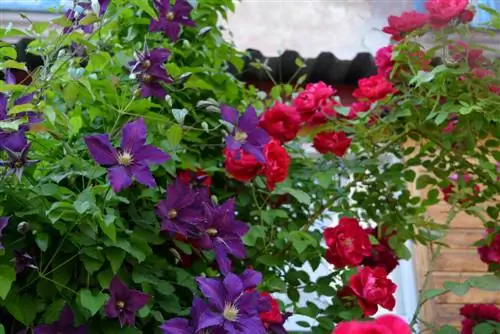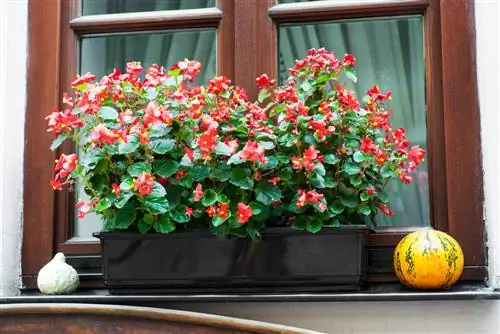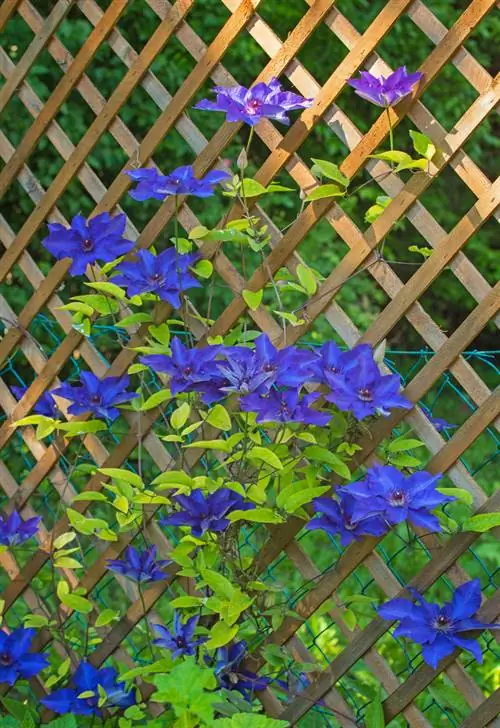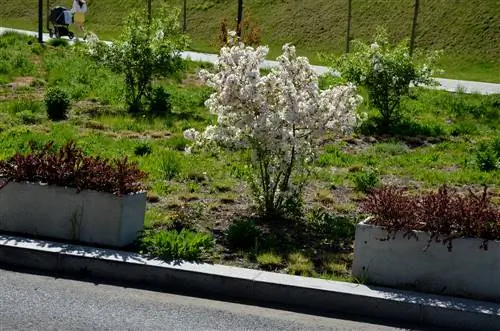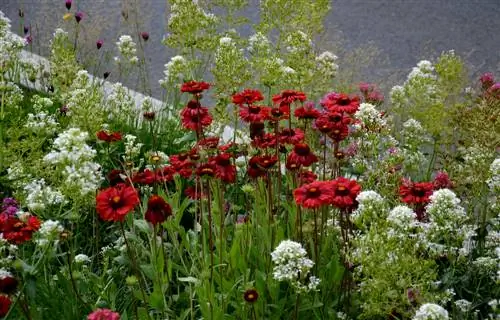- Author admin [email protected].
- Public 2023-12-16 16:46.
- Last modified 2025-01-23 11:19.
Numerous house facades, walls, fences, pergolas and all other trellises would just be a pile of dreary misery without climbing plants. It's no wonder that climbing plants are so popular, as they often beautify in a fairytale-like way. But how do you combine them?

What factors should you consider when combining climbing plants?
So that the climbing plants do not have any visual disadvantages when combined with their partner, the following factors should be taken into account in advance:
- Foliage: deciduous to evergreen
- Flower color: white, yellow, orange, pink, red, violet or blue
- Flowering time: May to October
- Location requirements: sunny to shady, well-drained soil
- Growth height: up to 20 m
When looking for suitable companion plants, you should remember that many climbing plants shed their leaves in autumn, but there are also specimens that keep their leaves all year round.
The flowering time of your climbing plant is also important. If you want to display them together with the flowers of other plants, the plant partners should bloom at about the same time.
On the one hand, there are climbing plants that can bask in the sun and really blossom there. On the other hand, there are climbing plants that prefer to go to darker areas. When combining, orientate yourself on the respective location requirements.
Combine climbing plants in the bed or in the pot
It's nice to combine different climbing plants with each other. This is particularly worthwhile for climbing plants that, for example, do not produce any special flowers but rather adorn themselves with their foliage. These benefit from a combination with flowering and colorful climbing plants. A well-known team is ivy and clematis. In addition, underplanting with ground cover or perennials is beneficial for climbing plants, as they sometimes appear bare underneath.
Ideal partners for climbing plants include:
- woman's coat
- Gypsophila
- Gold basket
- Storksbill
- Bluebells
- Small Periwinkle
- Herbs like mint, thyme and oregano
- Ornamental grasses such as blue fescue, switchgrass and pennisetum
Combine Clematis with Hanging Cushion Bellflower
The interaction between a purple clematis and an equally colored hanging cushion bellflower looks wonderfully harmonious. The flowers are similar in a certain way and the hanging cushion bellflower is able to shade the root area of the clematis with its dense growth. Due to the low growth height of this bellflower, the two do not get in each other's way and a peaceful coexistence is created.
Combine climbing rose with lady's mantle
Various types of lady's mantle have proven themselves as companion plants for roses. Lady's mantle goes well with climbing roses because it also likes to be in the sun. It also remains low and its leaves and flowers create pleasant accents.
Combine climbing plants on the facade
The combination of climbing plants on a house facade creates a real eye-catcher. Climbing plants such as clematis and climbing roses rely on a climbing aid, but they still look fantastic, especially when they are combined with each other. Ivy can also be wonderfully enriched in color on the facade with a clematis, black-eyed Susan or pipe bindweed.
Combine climbing roses with clematis
A fabulous duo, they really are, the climbing rose and the clematis. Let the two of them climb up together using a trellis that is attached to the house facade. They present their flowers at the same time and the right choice of color creates impressive contrasts.

